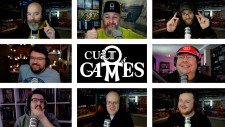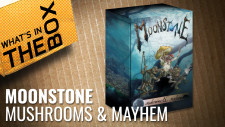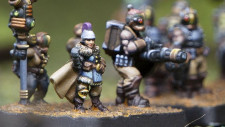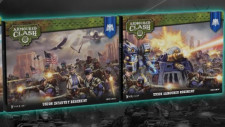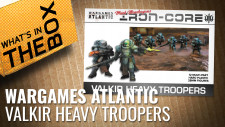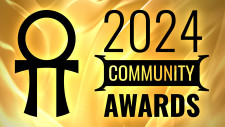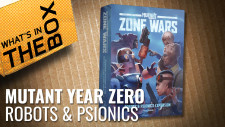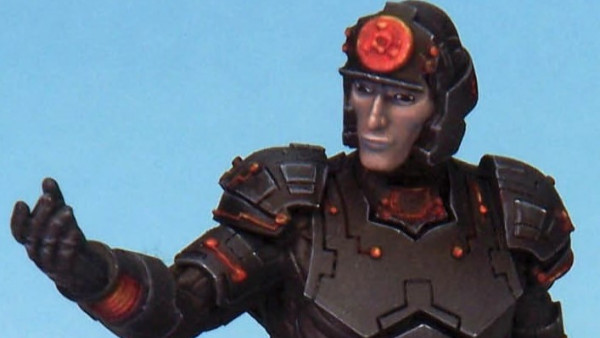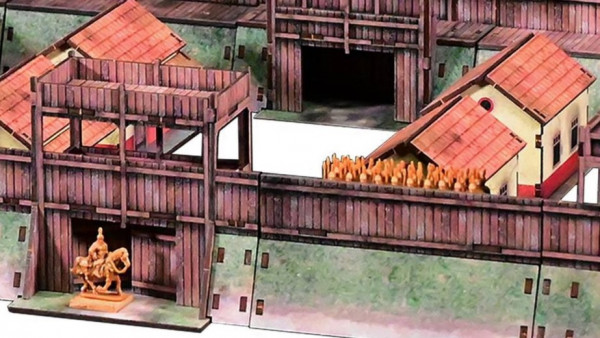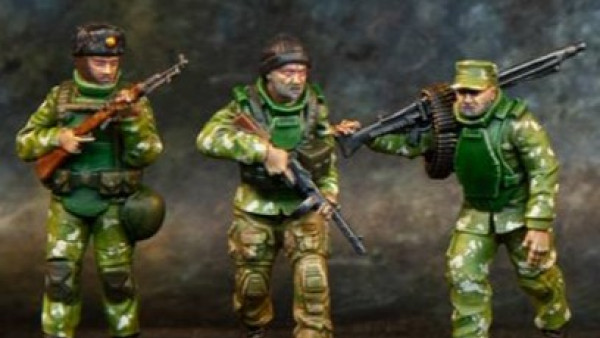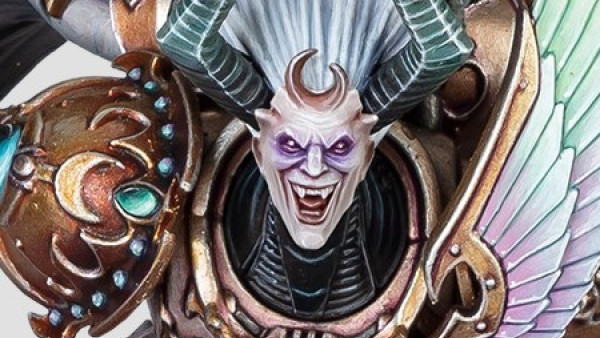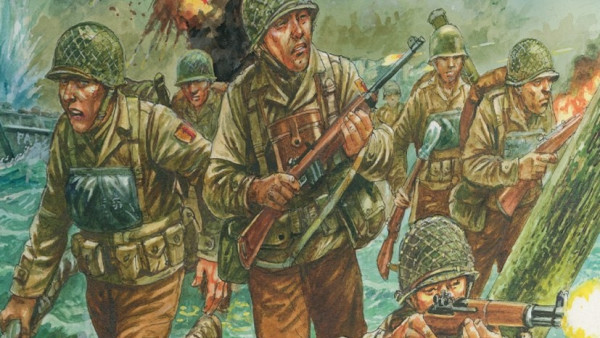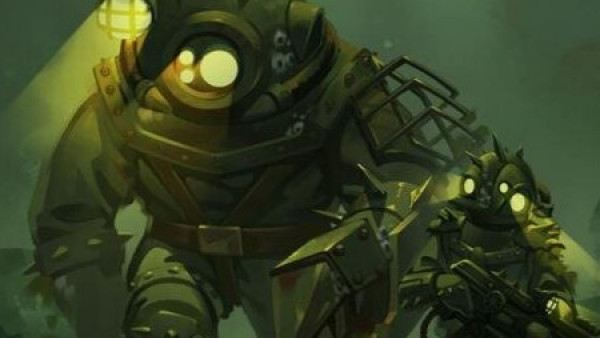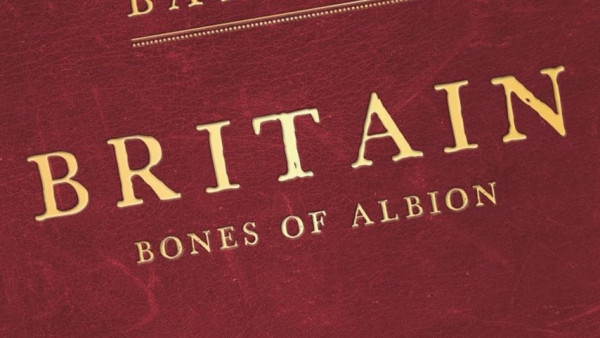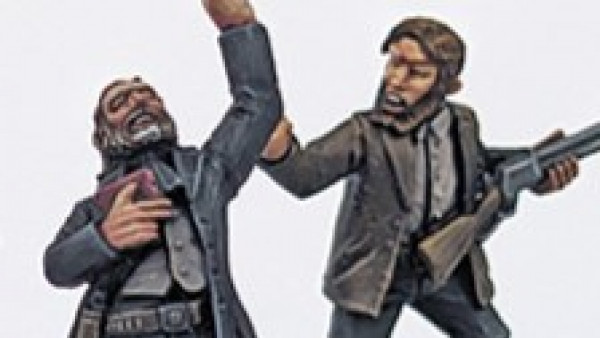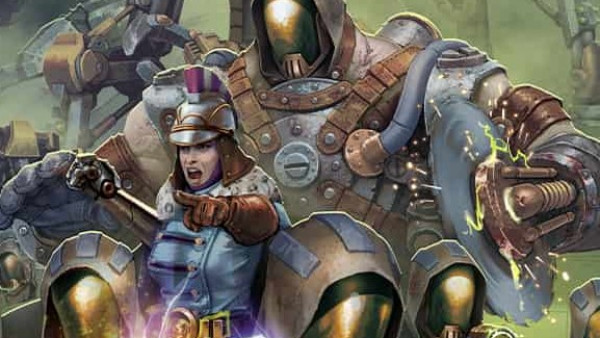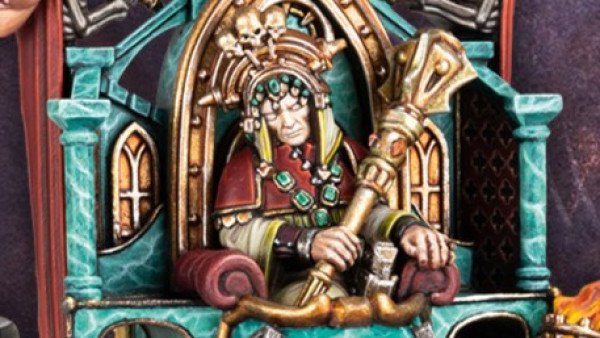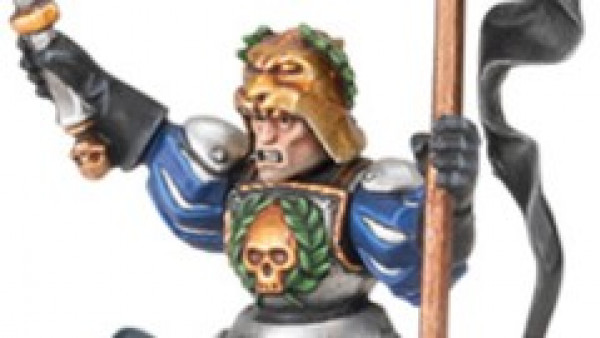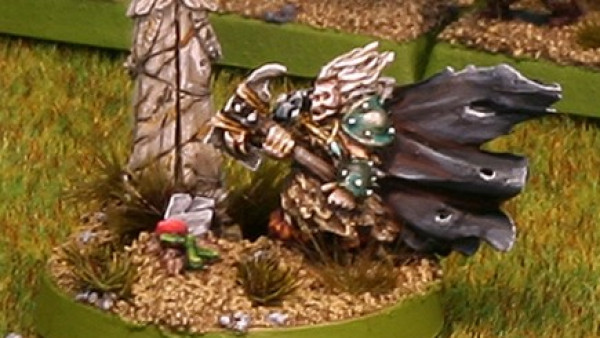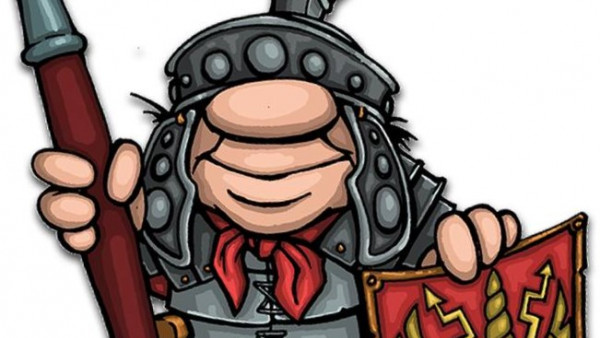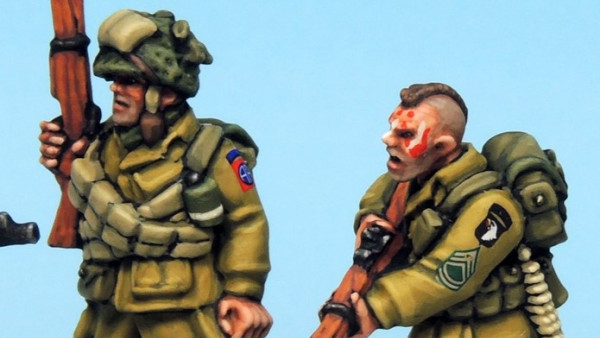Home › Forums › Historical Tabletop Game Discussions › Where to put decals on British Starter Force, should I bother?
Related Games:
Related Companies:
Tagged: British Starter Force, Flames of War, tank markings, transfers
This topic contains 15 replies, has 9 voices, and was last updated by ![]() redvers 4 years, 3 months ago.
redvers 4 years, 3 months ago.
-
AuthorPosts
-
September 18, 2020 at 1:36 pm #1567638
Hi history buffs!
I’m working my way through a British Starter Force, this box here:
It comes with 2 sheets of transfers/decals for tank marking but no guide as to where to put them.
Is this sort of info covered in the Colours Of War book?
If not, dose anyone know where to look to get help with where the transfers go.
Cheers all,
Lloyd.September 18, 2020 at 2:48 pm #1567648@lloyd – I would say yes please do use the transfers, British markings in particular add a great color point to a paint scheme.
In summary, squadron markings (blue, yellow, or red circles, triangles, or squares) go on the sides of the turret (roughly … the “company” the tank belongs to … pretty sure they would all be the same in your force).
Regimental / Brigade markings one one fender, division markings on the other. These would almost certainly be the same.
Give me a few minutes to look at exactly what decals you have (via your links) and I’ll try to put together a quick cheat sheet. 😀
September 18, 2020 at 3:20 pm #1567659You’ll need to decide which tank division you want to make as the decals cover desert rats, Irish Guard, a Canadian armoured division etc. The divisional symbol is usually placed on the rear right mud guard (but I’ve seen on the left as well). Some tanks also had the insignia on the front right as well, either on the mud guard or just inside the tracks on the hull.
On the opposite mud guard to the divisional insignia you should place the brigade number which is the numbers in the square decals. These changed a lot so unless you have a specific time or brigade you want to use, pick one of 51, 52 or 53 and use that (for the Desert Rats).
Usually you would put a big star on the engine deck (so aircraft could identify their targets) then some tanks had smaller stars on their sides but not all, this is more of a personal preference. A lot of the British tank crews didn’t like the star as they thought it was too American. Some tanks never had one and others were painted upside down as a protest.
The triangle, square and circle designate the tank Squadron as A, B or C respectively. I usually like all my tanks from the same squadron so stick with one type of shape. The decal goes on each side of the turret.
The small yellow circles with numbers in are the bridging weights and always go on the front to the left, usually low down. You need to put the correct bridging weight on each tank. All I can remember is the Churchill gets the biggest number as it is a lumbering beast.
Some of the Stuart tanks had the ID numbers on the rear on their flanks. I think this was more common in the US army, so I don’t bother for the British army.
September 18, 2020 at 3:23 pm #1567661September 18, 2020 at 3:54 pm #1567664Okay, @lloyd, I’ve looked at what force you have. It says “Desert Rats” but the tanks are for late war 1944-45 in Northwest Europe. This is because the famous 7th Armoured Division called themselves the Desert Rats even when not fighting in the desert.
Okay, I’m not 100% sure what transfers you have or what’s in the Colors of War book, but here are some general tips I hope will help.
Looks like you have a late war force (Cromwells, M5 Stuarts, Crocodiles, Fireflies, etc).
First up is the divisional marking. I’m not sure what choices the set you have offers, but this is the first choice (as @redvers says). If you want to keep them Desert Rats (7th Armored) this will be a small red and white mouse or rat-looking character. This goes on the FRONT LEFT FENDER, or front-left part of the lower hull, wherever it will fit. The same with the back.
Other choices might be a blue eye or a yellow and black bull for different divisions. All are valid, I would just make sure they’re all the same for your force (your force is probably 10-15 tanks, a division is 250+ tanks, so all your force would belong to the same division).

Divisions are then broken into Brigades. This will be a large two-digit number. This goes on the front right fender or front-left part of the lower hull, the same with the back. Red will be for tanks. I think green was for attached infantry units (Universal Carriers, trucks, etc). Blue MIGHT be for those Churculls with the trailers on the back if you’re making them up as flamethrower tanks? (Armored Vehicle Royal Engineers) I defer to others on that one.
Squadron numbers are the red, yellow, blue, or white diamonds, squares, circles, or triangles. These go on the sides, usually the turret, sometimes the hull.

The color of the marking shows what regiment the tank belongs to. Red is the “senior” regiment, yellow is second regiment, blue is junior regiment, white is “unbrigaded” regiment (temporarily attached to division). SUPER-GROGNARDS will care about matching the color of these markings to the two-digit numbers discussed earlier (51 = the senior brigade, red = senior regiment) but that is a tiny detail and I can’t be specific if I don’t know what decals you have.
Triangle = A Squadron, Square = B Squadron, Circle = C Squadron
All that really matters is this: The Diamond is the COMMANDER. So I would only put diamonds on one vehicle in your force, or one per vehicle TYPE. For the rest I would use triangles, squares, or circles, whichever you prefer.
A squadron is roughly a company, 10-15 tanks or vehicles. So you could have your whole force be part of the same company (all triangles, circles, or squares of a certain color, with one vehicle designated commander with the diamond).
More realistically, use different squadron markings for different TYPES of vehicles in your unit – especially Stuarts, Churchills, tank destroyers, Cromwells, etc. This is because these kinds of tanks were never in the same company-sized squadron (also you might not have enough squadron markings of a particular type to put the same kind of ALL vehicles). The one exception would be Shermans and Sherman fireflies. A typical troop (platoon) would be three Shermans and one firefly. These would have the same squadron markings.
Whatever SHAPE(s) you pick, I would just probably make sure they’re all the same COLOR as the color determines what larger-scale regiment / brigade your force belongs to.
Not sure what else you may have. Serial numbers are on the side of the turret beneath the squadron marking, or the side of the hull near the back. Also the very bottom of the front hull. You may have “bridge weight” markings – yellow or white circles with a two-digit number, somewhere between 25-35 … this is the tonnage of the vehicle, somewhere on the lower part of the front or back hull. There might also be “troop rank” designators on the back of the turret (example: 2c), not sure what you have.
Anyway, I hope that’s a START, and of course others can weigh in to add more detail or keep me honest. 😀 Let us know if you have more questions or decals I might not have covered.


 September 18, 2020 at 4:02 pm #1567667
September 18, 2020 at 4:02 pm #1567667Don’t forget to buy some Micro-Sol for putting those transfers on (it’s handy for those LBMS shield transfers as well). Usually costs you about a £10 for both bottles and stops that weird “raised edge” effect you get from using transfers. The bottles last you AGES as well.
Here’s a handy video on how to use them (although those 15mm transfers should be tiny and tanks are mostly flat, so you could probably skip this step…but it’s handy stuff to have around for 28mm figures as well).
September 18, 2020 at 4:29 pm #1567670Great tip @phaidknott – I use Vallejo anti-shine varnish for decals and I swear by that stuff.
September 18, 2020 at 5:10 pm #1567672This will make sorting out what transfers to add a lot easier.
Consider this favourited.
September 18, 2020 at 6:03 pm #1567676Also the blue and green ones with numbers are reconnaissance regiment vehicles. In some brigades this would be Cromwells.
September 18, 2020 at 8:34 pm #1567690I knew we could put our faith in @oriskany to come up with a complete answer!
You can find the correct bridging weights at the bottom of this page:
https://en.wikipedia.org/wiki/British_military_vehicle_markings_of_World_War_II
Should have also mentioned that IF you (or your opponent) are being really pedantic AND you are planning on playing Flames of War, there are slight statistics variations between some of the British Divisions. This mainly impacts their skill rating and motivation and consequently their points. For example, if you take the Guards Armoured Division, you get a better Last Stand for 3 points. The 6th Armoured Division’s 8th Hussars are rated Confident and slightly more expensive in points when compared to the Desert Rats who are rated Reluctant.
September 18, 2020 at 8:44 pm #1567692‘Reluctant’ is a bit harsh… But like 51st Highland, by late 44, 7th Armoured were kind of thinking it was someone else’s turn to do the hard fighting. IIRC, (51st certainly), elements of both had been at the sharp end since 1939. No-one wanted to be the last casualty of the war. Monty placed such reliance on both divisions that they were pretty fed up. So they were highly skilled and experienced, but not enthusiastic.
September 19, 2020 at 12:03 am #1567764Thanks everyone, some reading here for sure 🙂 cheers for the detailed reply @oriskany and the tutorial @phaidknott
Here’s the 2 sheets that came in the box, same sheet x2.

Looks like I can do Grenadier Guards and Irish Guards. I don’t have any diamonds, dose that matter?
What about Scottish, did they fall under Grenadier Guards?
Oh and “your force is probably 10-15 tanks, a division is 250+ tanks, so all your force would belong to the same division” – this is going to make something I say on the XLBS seem kind of stupid lol 🙂
September 19, 2020 at 2:09 am #1567780Guards Armoured was not really Scottish. 6th Guards tanks brigade (Churchills) included 3rd Battalion The Scots Guards, and 32 Infantry Brigade (Guards) the 2nd Battalion Scots Guards.
1st Battalion Scots Guards was joined to the 6th (South African) Armoured.
If you want Scots in tanks, your best bet is the Scots Greys – 4th Armoured Brigade, or the Fife & Forfarshire Yeomanry. 2nd F&F saw action under 11 Armoured (Black Bulls), 1st F&F was with the 79th division.
September 19, 2020 at 3:40 am #1567786No worries, @lloyd –
Okay, looks like you’ve got red and blue squadron markings. This allows for some choices, some of which you’ve already got figured out:
ONE: Guards Arm’d Division (Blue eye) > Senior Regiment (Red 51) > Red triangles for A Squadron, Squares for B Squadron, Circles for C Squadron. This would be for “2nd Bn, Grenadier Guards, Guards Armoured Division”
TWO: Guards Arm’d Division (Blue eye) > Third Regiment (Red 53) > Blue triangles for A Squadron, Squares for B Squadron, Circles for C Squadron. This would be for “2nd Bn, Irish Guards, Guards Armoured Division”
THREE: 7th Armored Division (Red Rat) Senior Regiment (Red 51) > Red triangles for A Squadron, Squares for B Squadron, Circles for C Squadron. I think this would be for “1st Royal Tank Regiment, 22nd Armoured Brigade, 7th Armoured Division”
FOUR: 7th Armored Division (Red Rat) Third Regiment (Red 53) > Blue triangles for A Squadron, Squares for B Squadron, Circles for C Squadron. I think this would be for “5th Royal Inniskilling Dragoon Guards, 22nd Armoured Brigade, 7th Armoured Division”
For some reason those transfer sheets don’t have any yellow squadron markings, so this leaves out any “Second Battalion” choices. Thus we either have “Senior Regiment” or “Third Regiment”, as listed above.
Don’t worry about no diamonds, you just won’t have any regimental commanders in your force. No worries, they have no business that close to the front in a company-scale battle anyway. 😀 They also don’t give you any red “50” brigade HQ markings, so this also works out well.
I also don’t see any green regiment / brigade numbers on there for units of an infantry brigade. Makes sense, the boxed set specifies an armoured force. So you can use the red “54”s on the bren carriers – designating them as part of the motorized battalion of whatever armoured regiment you choose to put together.
I would strongly suggest using the red-blue “77s” on those M10s, designating them as antitank artillery.
Doesn’t look like they gave you any blue 41s or 46s (Royal Engineers) – so I don’t know what regimental numbers you would use on those Crocodiles. Side note, if you want you can leave off those trailers (fuel tanks for the flame throwers) and just use them as standard Churchill heavy “infantry” tanks.
Regarding Scots in tanks, I concur with @khusrau on two of the easiest choices:
Scots Greys were a famous battalion and regiment. In WW2 they were part of 4th Armoured Brigade. The 4th Brigade fought as part of 7th Armoured Division Desert Rats … in the desert 1942-43. By the time we get to NW Europe, 4th Armoured Brigade (and the Scots Greys) were an independent unit moved around to different divisions as the mission required. For example, during Market Garden they were with 43rd Riding (Infantry) Division (?? – don’t ask me why).
So … I’m not really sure how the divisional markings would work for that since the Scots Greys / 4th Arm’d Brigade were permanently part of no division in 44-45.
The other likely choice @khusrau mentions is the 2nd Bn, Fife and Forfar Yeomanry. This battalion was attached to the 29th Armored Brigade in 44-45, which in turn was part of 11th Armored Division (the yellow and black bull in my pics above). To do this one 100% correct, you’d need not only those yellow and black bulls for 11th Armoured Division, but also yellow triangle, square, and circle squadron markings as I believe this was the “second” regiment (Red “52”) with the 29th Armoured Brigade.
So you could do it, you’d just need some additional decal sheets.
If you want to stick with the decal sheets you have, I would go with one of the four choices listed at the top of this post.
Oh, and yes … British military units are f***ing BEWILDERING. And this is from someone who spends most of his time on the Eastern Front with German and Soviet units / tables of organization. 🙁 🙁 🙁
September 19, 2020 at 10:39 am #1567827 -
AuthorPosts
You must be logged in to reply to this topic.





























